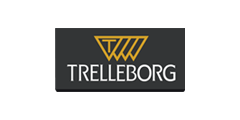Orkot® Hydro Bearings Machining Instructions
■General
▲Orkot® materials are readily machinable by conventional machine shop techniques. As a general guide, methods used for brass, aluminium or lignum vitae will apply for Orkot® materials. It is preferable to use tungsten carbide turning tools with cutting speeds of 5.5 metres (19 feet) per second. Orkot® materials must be machined dry without the use of coolant.
■Turning
▲Tungsten carbide tooling of the butt welded type using K20 grade carbide is suitable for most applications. If carbide inserts are used, then aluminium grades with high positive rates give best results e.g. Plansee grade H10T, Sandvik H10A or H13A, Mitsubishi HTI10.
▲For heavy wall thickness, the internal and external diameters should be machined together to reduce vibration.
▲No asbestos is used in the manufacturing of Orkot® Hydro and the material is completely non toxic. It is however advisable to use adequate dust extraction when machining. If unavailable, operators should wear dust particle masks.
▲For small volume work and machining of chamfers, radii and other forms, then high speed steel gives good results, but tool life is shorter than with tungsten carbide.
|
|
|
|
User's Guide |
|
|
|
|
Please see the document for details |
|
|
|
|
|
|
|
|
|
|
|
English Chinese Chinese and English Japanese |
|
|
2003/11/27 |
|
|
|
|
|
|
|
|
856 KB |
- +1 Like
- Add to Favorites
Recommend
- Trelleborg Expands Its Qingdao-based Manufacturing Facility to Accommodate Growth
- Trelleborg Launches Strong and Light High-Load Composite Material for Aerospace Landing Gear
- Trelleborg Launches New Interactive Dynamoor Experience
- More than 150 Electromechanical Components Brands Cooperate with Sekorm
- The world‘s top suppliers of connectors and structural parts: PhoenixContact, TE Connectivity, Weidmueller, etc.
All reproduced articles on this site are for the purpose of conveying more information and clearly indicate the source. If media or individuals who do not want to be reproduced can contact us, which will be deleted.






































































































































































































































































































































































































































































































































































































































































































































































































































